7 Website Copywriting Mistakes Keeping You From Getting Clients
by Jacob Baadsgaard • August 4, 2017
If you ask any business owner right now if they want more clients, the answer would almost always be a resounding yes. One of the most important tasks all businesses have is finding new ways to increase the number of clients they’re signing on.
Your website’s copy should be one of the best tools in your arsenal when it comes to getting new clients. Unfortunately, too many businesses make the same website copywriting mistakes. At the best, these copywriting mistakes don’t help them sell, and at the worst, they can hurt the business’s chances of getting new clients.
In this post, we’re going to take a look at 7 of the most common website copywriting mistakes that could keep you from getting new clients and sales.
1. Your Copy Doesn’t Keep Users Moving Through the Site
A good copywriter should be able to do more than just string together some articulate sentences with correct grammar. They should be writing copy that sells. Part of that is knowing how to keep a user moving through your site until they get the information they need to decide they want to convert and become a new client.
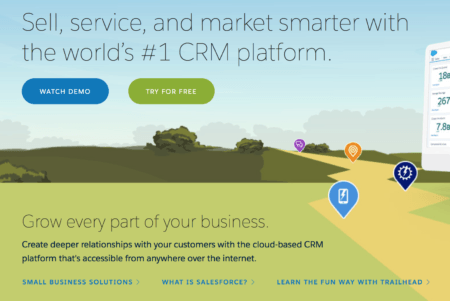
Your copy, combined with design, should keep users moving through your site.
There should be just enough information on your home page, for example, to get users engaged without telling them everything and overwhelming them. The home page should seek to send users either to a features page, a services page, or an about us page.
This next page, in turn, may aim to send users to a contact page, or a landing page offering a free trial. Design will obviously play a big part in this, but choosing the right CTA is essential, too. Users will be more receptive to “Learn More” than “Shop Now” on the home page, for example, and the copy should reflect that.
2. Your Copy Doesn’t Focus on Actual Conversions
This ties in to website copywriting mistake number one, but it’s important enough that it deserves its own section. You want to keep users moving through your site for one reason…and it’s not so you can show users all your other fancy copy.
Your site’s copy should be geared towards conversion. There should always be an option for users to “Sign Up” or “Contact Us” immediately visible on every page and every single page they see should make them more inclined to do just that. You should have clear CTAs on every page of your site near copy that explain why they should be converting.
The copy doesn’t have to be extensive—a quick but effective statement will do the trick—as pictured below from the copy here on our own site.
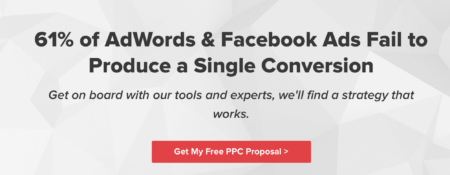
This might sound obvious, but so many sites have copy that just says what the product is, in general. I’ve seen sites that list years of experience or have a full-length About Us, but then neglect to say what their actual product, specialty, or service is.
That’s a problem.
If you don’t have copy that’s actually geared towards conversions (getting people to act right now), you’re not likely to get many clients.
3. Forgetting to Research Your Audience
If you aren’t writing copy that’s specifically tailored to your audience, you might as well throw in the towel now. The copy doesn’t need to convince you that your business is great, after all: it needs to convince your target audience.
You need to understand your target audience before you get started. Look at the buyer personas you use for your ads—they matter here, too. Understand what they want, and what needs your product can fill. Without this information, your copy will fall flat every time.

Different audiences will have different pain points, even if they’re subtle. It’s why Corelle dining wear advertises itself as being durable and affordable, while the plates you get from a place like World Market are advertised on looking stylish on a table.

A lot of businesses are worried about driving away traffic if they get too niche-specific in their copy. As a result, they actually end up losing the clients they really wanted because they didn’t do enough to appeal to them.
Failing to research your audience before you start writing can hurt your business and keep you from getting exactly the clients you want to work with you. And hey, if the niche-specific copy drove away traffic, it was probably traffic you didn’t care about anyways.
4. Failing to Hit the Right Pain Points
Pain points are a key part of effective copy. But, as I just mentioned, if you don’t know your audience, you don’t know their pain points.
Remember, you started your business because you saw a problem that needed to be solved, and you’ve arrived with your solution. In order to sell it in your copy, however, you need to be very clear in why users need to purchase. That means you need to focus on the right pain points.
For example, companies can charge $14.00 for “natural,” alumninum-free deodorant to people who are health conscious (especially those who worry about breast cancer), but historically the products haven’t been overwhelmingly great and have stained clothes, not lasted, or left a sticky residue after application.
The copy pictured below hits all of those pain points, while still addressing the health-conscious angle first:
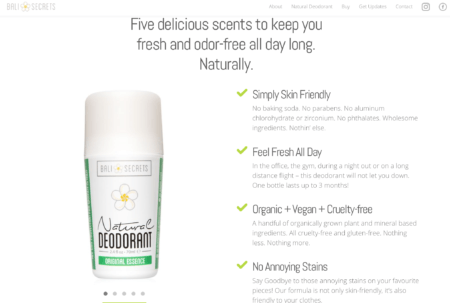
No matter how well you know your audience, if you don’t use that knowledge to focus your copy on their pain points, your copy won’t do you a whole lot of good.
5. Not Setting Yourself Apart
There’s a local business called TrackShack, where lifelong athletes and runners help customers pick out the exact right running shoes for them.
At TrackShack, they take things beyond Shoe Carnival’s simple measurement of the length and width of your foot and actually analyze the arches of your foot, how you walk, how you run, and your activities of choice before offering shoe recommendations.
It’s an awesome selling point, but when you visit their website, this special service is nowhere to be found!
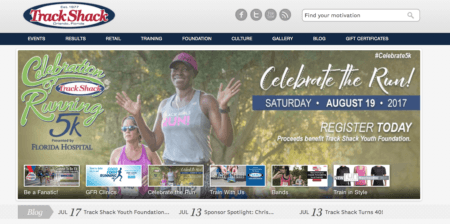
In today’s world, everyone has an endless number of Google searches worth of competition. If you’re not telling users immediately why you’re different and what you have to offer that your competition doesn’t, start waving goodbye to potential clients now.
6. There’s Too Much of It
That old phrase “less is more” is almost always true when it comes to copywriting and having too much copy is easily one of the most common copywriting mistakes out there.
When I worked in sales, I had a colleague who shot herself in the foot because she talked too much. Time after time, I’d see her talk a customer into a sale and then talk them right on out of it. Don’t let your site copy do that to you.

Break up your copy into short, concise phrases and into small chunks of text.
Your copy should only have the information potential leads and clients need to convince them that they need your product and nothing else. In addition, keep your copy in clean sections. Good online copy should never look like an essay—if you actually want people to read your text, you need to break it into small chunks.
7. Ignoring SEO
I know, there’s always some article coming out online proclaiming that SEO is dead. I don’t know where these people come up with these ideas, but they’re clearly not the ones coming in at the number one spot in Google’s search results, so I wouldn’t pay too much attention.
SEO matters, and when it comes to copywriting, that means you need to take keywords into consideration. Use tools like Moz’s Keyword Explorer or SEMRush to research the keywords that the audience in your area is searching. Your copy can’t convince new clients to purchase from you, after all, if they never find you in first place!
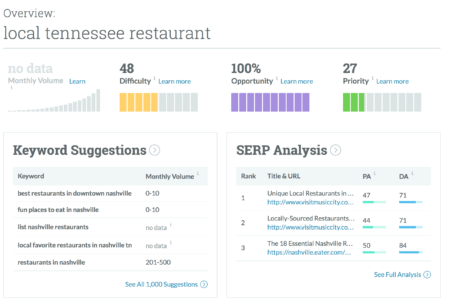
As you optimize for SEO, focus on phrasing that your customers will be looking for. We recently helped a home repair business with their site copy that had been optimizing for the official names of different repairs like “fire restoration” instead of “fire cleanup.”
On the surface, that might not seem like a big deal, but most of this client’s customers weren’t searching online for “fire restoration.” They were searching for “fire cleanup”. Once we made this switch, their traffic—and their number of appointment requests—went up quickly.
Final Thoughts
Copywriting can be a tricky business—there’s a reason a lot of the really good copywriters charge a hefty fee for a few hundred words. Unless you’re an experienced copywriter yourself, it’s probably a good idea to hire a professional to take on the task and you can keep an eye out for any of these common mistakes.
If you do decide to write your own copy yourself, remember that great copy is meant to sell you, your brand, and your products to your specific target audience. It may sound obvious, but it’s a fact a lot of people have a tendency to overlook, which ends up sinking their conversions and losing them clients.
What do you think? What are the most common website copywriting mistakes you’ve seen made? How do you improve your copy to ensure it gets conversions? Leave us a comment and let us know what you think!




